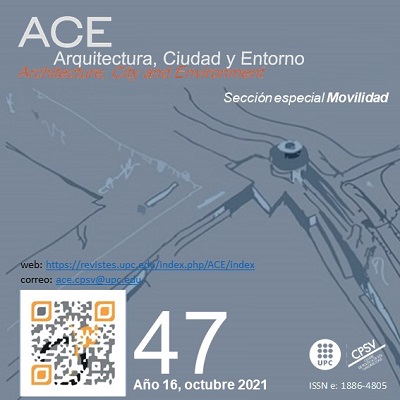Integrating 3D Game Engines in Enhancing Urban Perception: A Case Study of Students' Visualization of Urban Space
DOI:
https://doi.org/10.5821/ace.16.47.9886Keywords:
Interactive 3D environment, game engines, 3D Unity, urban perception, students’ involvement, urban space visualization.Abstract
In urban design, consideration of urban participation, perception, and experience is very important for achievement of successful, easy-to-implement, and user-friendly spatial design. Participatory urban visualization is a method that allows residents to be involved in formulating the future of their locality. This paper reports a case study of participation of 15 volunteer students in visualization of the future of their locality via three methods: physical models, pre-rendered animated walkthrough, and an interactive real-time demo. The study examines the impact of using the three-dimension (3D) Unity game engine on urban space imageability and understanding. Accordingly, this paper presents a comparative study of the three visualization techniques by analyzing the results of a series of experiments, a questionnaire, and observations. The outcomes support that the used 3D game engine provides an efficient tool that can help users to experience, perceive, and understand urban solutions interactively and effectively. Furthermore, this study confirms the role of technology in enhancing the user’s learning experience. Additionally, the study results indicate that integrating interactive game technology in urban space visualization has positive effect on space perception of people.
Published
Issue
Section
License
| INTELECTUAL PROTECTION CRITERIA |
At this moment, it is count with the "Oficina Española de Patentes y Marcas", while global protection it is being processed by the World Intelectual Property Organization (OMPI/WIPO). Nevertheless the International Standard Serial Number Office (ISSN) has given the following numbers ISSN: 1886-4805 (electronic version) and 1887-7052 (paper version). All articles will be peer reviewed, using double blind reviewing. |
| COPYRIGHT |
The article contents and their comments are authors exclusive liability, and do not reflect necessarily the journal editor commitee's opinion. All ACE published works are subject to the following licence CC BY-NC-ND 3.0 ES http://creativecommons.org/licenses/by-nc-nd/3.0/es/ It implies that authors do not hold nor retain the copyright without restrictions but only those included in the licence. |





































